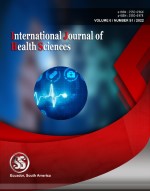Arranged sample in GHLD for software reliability growth model
Keywords:
GHLD type I, arranged sample, maximum likelihood estimation, SRGMAbstract
As the size and complexity increases, it is difficult to generate reliable software for the users. Reliability depends on number of failures which create a great loss in the software system. Though many software reliability growth models exist, but for time domain data can be handled through Arranged sample approach and one can construct NHPP leads to reliability function and formulate SRGM. In this paper, an attempt is made to present the GHLD type - I model with arranged sample as a software reliability growth model and derive the expressions for Reliability function that facilitates to compute the reliability of a product. Maximum likelihood estimation procedure is used to estimate the parameters of the model. Through the analysis of live data sets the results are exhibited.
Downloads
References
Musa J.D, Software Reliability Engineering MCGraw-Hill, 1998.
Pham. H (2005) “A Generalized Logistic Software Reliability Growth Model”, Opsearch, Vol.42, No.4, 332-331.
Musa,J.D. (1980) “The Measurement and Management of Software Reliability”, Proceeding of the IEEE vol.68, No.9, 1131-1142
WOOD, A. predicting software Reliability, IEEE Computer, 1996; 2253-2264
Sitakumari.k, Satya Prasad.R , Assessing Software Quality with Time Domain Pareto Type II using SPC SPC, IJCA, 2014
Dr.R.Satya Prasad, NGeetha Rani, Prof R.R.L.Kantham, Pareto Type II Based Software Reliability Growth Model, International Journal of Software Engineering, Vol (2), 2011
R.R.L.Kantam and R.Subbarao, 2009. “Pareto Distribution: A Software Reliability Growth Model”. International Journal of Performability Engineering, Volume 5, Number 3, April 2009, Paper 9, PP: 275- 281.
J.D.Musa and K.Okumoto,”A Logorithmic Poisson Execution time modelfor software reliability measure-ment”, proceeding seventh international conference on software engineering, orlando, pp.230-238,1984
Arak M. Mathai ;Order Statistics from a Logistic Dstribution and Applications to Survival and Reliability Analysis;IEEE Transactions on Reliability, vol.52, No.2; 2003
Balakrishnan.N., Clifford Cohen; Order Statistics and Inference; Academic Press inc.;1991
K.Ramchand H Rao, R.Satya Prasad, R.R.L.Kantham; Assessing Software Reliability Using SPC – An Order Statistics Approach; IJCSEA Vol.1, No.4, August 2011
Michael R.Lyu 1996a, Handbook of Software Reliability Engineering.
C. Jin and S.-W. Jin, “Parameter optimization of software reliability growth model with S-shaped testing-effort function using improved swarm intelligent optimization,” Applied Soft Computing, vol. 40, pp. 283–291, 2016.
DalilaAmara, Latifa BenArfa Rabai Towards a New Framework of Software Reliability Measurement Based on Software Metrics”, Volume 109, 2017, Pages 725-730
Lutfiah Ismail A turk1 & Wejdan Saleem Al ahmadi “Comparative Study of the Non-Homogeneous Poisson Process Type-I Generalized Half-Logistic Distribution”, International Journal of Statistics and Probability; Vol. 7, No. 6; November 2018.
V. Rama Krishna, R R L Kantam and T Subhamastan Rao “A Software Quality measurement using Generalized Half Logistic Distribution”, International Journal of Advanced Science and Technology (2020), Vol. 29, No.3, pp. 9665-9669.
Published
How to Cite
Issue
Section
Copyright (c) 2022 International journal of health sciences

This work is licensed under a Creative Commons Attribution-NonCommercial-NoDerivatives 4.0 International License.
Articles published in the International Journal of Health Sciences (IJHS) are available under Creative Commons Attribution Non-Commercial No Derivatives Licence (CC BY-NC-ND 4.0). Authors retain copyright in their work and grant IJHS right of first publication under CC BY-NC-ND 4.0. Users have the right to read, download, copy, distribute, print, search, or link to the full texts of articles in this journal, and to use them for any other lawful purpose.
Articles published in IJHS can be copied, communicated and shared in their published form for non-commercial purposes provided full attribution is given to the author and the journal. Authors are able to enter into separate, additional contractual arrangements for the non-exclusive distribution of the journal's published version of the work (e.g., post it to an institutional repository or publish it in a book), with an acknowledgment of its initial publication in this journal.
This copyright notice applies to articles published in IJHS volumes 4 onwards. Please read about the copyright notices for previous volumes under Journal History.
















